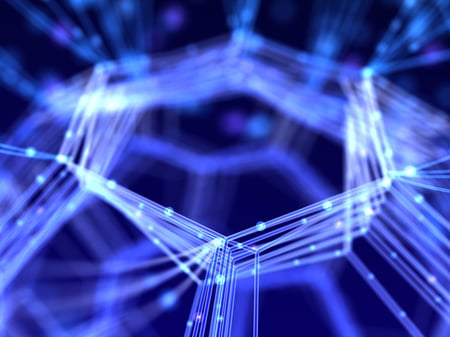Ground-breaking life science often draws on expertise from multiple disciplines. This is certainly true of the latest advances in medical device technology, poised to revolutionise patient diagnosis and care. Here, we feature some of the newest instruments and implants made possible thanks to the awesome combination of biomedical research and technology.
World’s smallest nanocamera
A camera that is so small it can be injected into the human body by syringe has been unveiled by researchers at the University of Stuttgart.
The 3D-printed camera lens, around 100 μm in diameter, is mounted onto an ultra-thin fibre optic cable the width of two human hairs. The device is at least 10 times smaller than conventional optics, is capable of capturing high resolution tissue images at a distance of 3 mm, and can resolve two lines separated by 1 μm. It’s thought the device will revolutionise endoscopy by visualising the hollow interior of previously hard-to-reach organs such as the brain.
The advance was made possible by a new fabrication process known as femtosecond direct laser writing, which takes 3D printing down to submicrometre levels. It takes just a few hours for a laser to sculpt the multi-layered lens from highly transparent photoresist.
Outside of medical imaging the tiny cameras could also find an application as sensors for miniature drones.
 Image: Inozemtsev Konstantin/Shutterstock.com
Image: Inozemtsev Konstantin/Shutterstock.com
‘Tattoo’ patch can monitor alcohol intake in real-time
US researchers have created a wearable patch capable of measuring alcohol levels in sweat. What’s more, the fully-flexible device can send real-time updates wirelessly to your smartphone.
Whilst breathalysers are the most common device for measuring alcohol intake, they rely on the indirect estimation of blood alcohol concentration through levels in breath, and can give false readings due to alcohol vapour from products like mouthwash. Truly accurate measurements of blood alcohol concentration requires invasive or inconvenient sampling techniques, and though non-invasive sweat-based approaches have been trialled, measurements suffer from long time lags of up to 2 hours.
The key technology behind the real-time breakthrough is a pair of flexible iontophoresis electrodes which transdermally deliver the sweat-inducing drug pilocarpine from a cryogel to produce perspiration on demand. An alcohol oxidase enzymatic electrode and a Prussian Blue electrode transducer – prepared by screen printing onto temporary tattoo paper – generates current in response to ethanol concentration. Coupled with a flexible circuit board the device can transmit data via Bluetooth to an associated device.
Though the prototype worked well on a band of merry volunteers, the team hope to personalise the device to account for variability in skin permeability and sweat composition. The technology could also be used for the non-invasive monitoring of other chemical markers, such as electrolytes, metabolites, and trace metals.
Tiny fuel cell feeds on human blood
Swedish scientists have developed a miniature enzymatic fuel cell that generates electricity from the body’s blood flow. The device – which produces enough power to run an e-ink display – has been trialled for the first time using a stream of blood from a human patient.
Reliable power sources are essential for implantable devices like pacemakers, but current battery technology means devices need replacing every 6–10 years. One solution may be self-sustaining fuel cell implants that derive power directly from blood glucose.
The mediator-free and membrane-less fuel cell uses a graphite anode and cathode modified with cellobiose dehydrogenase and bilirubin oxidase; redox enzymes which grab electrons from glucose molecules at the anode to power an electric circuit. At the cathode, oxygen molecules are reduced to produce water.
Using two-dimensional ultrasound and Doppler measurements of a patient’s arm, the team created a replica plastic vein to house the device, that could be connected to the blood stream for demonstration.
Although the 0.74 μW of power generated is relatively small, the team believe the device will pave the way for future simple and biocompatible fuel cell implants.
Stay up to date with the latest developments in medical device technology and beyond
New developments in biotechnology continue to drive progress in a wide range of fields, from medical devices and diagnostic testing, through to agriculture and bioprocessing. To stay up to date with the latest trends and discoveries, sign up to our newsletter today.





